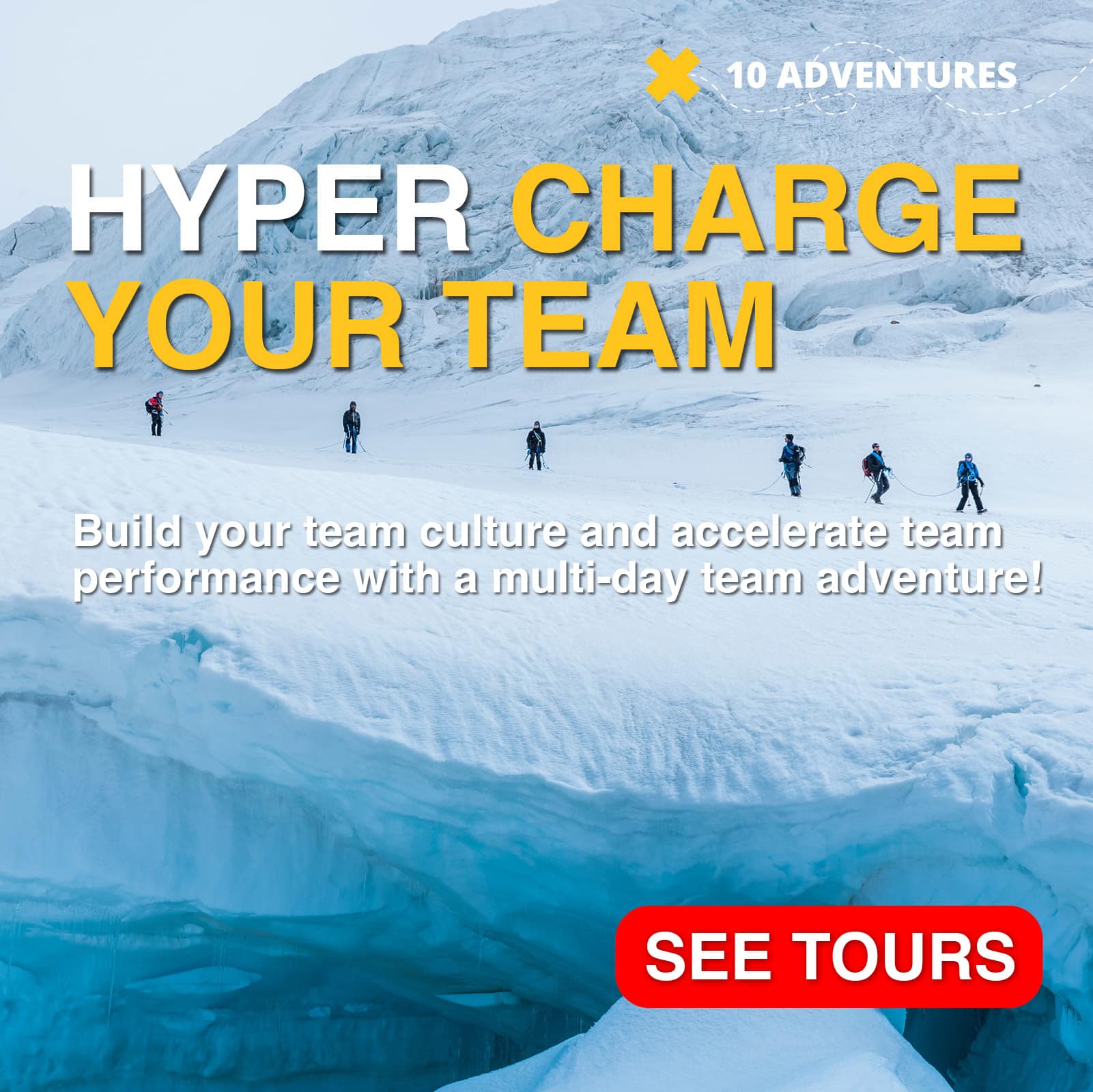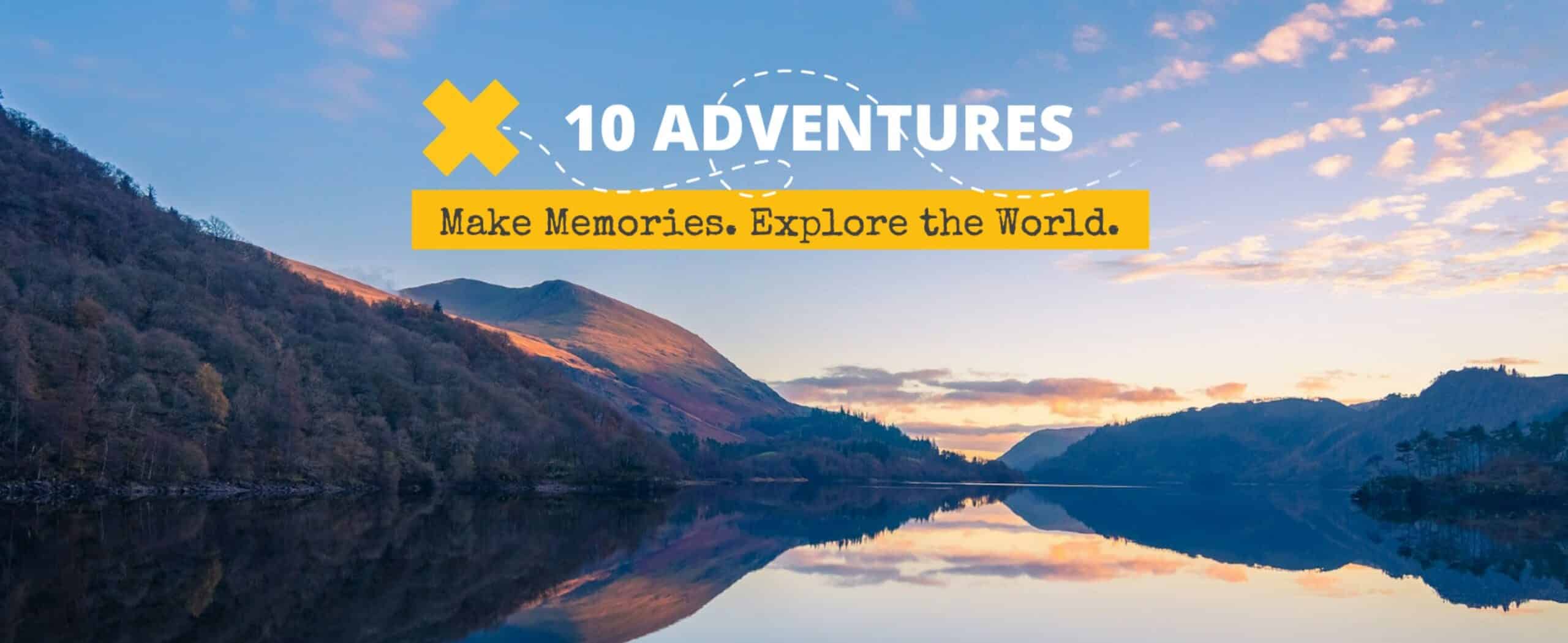As teams become dispersed in different locations, many companies are looking at regular retreats to give the team a chance to come together to bond, to solve a critical problem, or to do a bit of both.
The problem is that retreats all too often end up with the team meeting at a convenient airport hotel with days spent in a hotel boardroom.
This is a wasted opportunity, not to mention boring! There are teams out there planning incredible retreats that supercharge their coworkers and produce valuable results for the company. It’s time to learn from them!
We know it’s next to impossible to plan a company retreat on a whim! You need to consider a range of things before going: when to go, where to go, what to do, do you need to work while you’re away, how long should your retreat be, how active should it be, and the list goes on. So instead of frantically rushing through a checklist in your head, we’ll lay out the necessities to mull over as you plan your company retreat.
Read on to learn everything you need to know when planning a corporate retreat!
1. Company Retreat Goals
First thing’s first: what do you want to achieve on your company retreat? Consider asking yourself some of the following questions:
The biggest question is the goal of your retreat. Whether the goal is to solve a critical problem you’re having within your team or to improve future collaboration affects how your retreat should be planned.
For example, many team retreats focus on building relationships between the team members, allowing them to collaborate better once they’re all back. In these situations, finding ways to allow for unstructured communication is very valuable.

Other retreats are focused on a critical challenge you want the team to work on, like coming up with a strategic plan, sussing out new business opportunities, or improving culture. These types of retreats need times and places where the team can work efficiently while also allowing space for creativity and collaboration.
Often it’s not an either/or decision, and managers want to work on building relationships to enhance future collaboration while solving a key issue impacting the team or company.
Once you figure out your goals, you can start planning your budget! You can find out more about the purpose of a company retreat in our Company Retreat: Learn Why You Should Do Team Holidays article.
2. Work versus Experience
So you know whether you’re focusing on more work, more experiences, or a combination of both! Now you can figure out the location of your retreat.
If you decide that you want your team to focus on building their relationships, then escaping from the workplace’s hustle and bustle and bonding in an exotic location could fit the bill. Imagine the team bonding on a safari in eastern Africa! Now that would be a chance to bond. Closer to home, even just leaving the city and enjoying a nearby park or reserve could help the team connect on a deeper level.
Alternatively, if the goal is to work hard and solve key business challenges, then consider flying your team to a seaside location and spending hours working together by the shore. Working hard in an oceanside hotel then gives you the chance to ditch computer screens and meetings for beach lazing, fun team bonding sessions, and exciting dinner chats once the work is done.
Finally, there are lots of options where you can work on building relationships and work on company problems at the same time. A company retreat that fuses both work and play may fit best in a place like Banff, Canada. Imagine a morning working session and then spending afternoons exploring an incredible national park before evening allows for more work over a meal. You’d be surprised how many difficult problems are solved in an afternoon hike or with a glass of wine over dinner.
With all of this information, we can dig deeper into the goal mentioned above: Do you want to work and play while you’re away? Or just play?

3. Immersiveness
So, you’ve figured out your goals and your balance of work versus play. Now, here’s another big question: how much time do you want your team to spend together?
To dive deeper into this part of planning your retreat, think about how your days look while on retreat. Do you want the team to spend all their waking hours together, or will they have free time to recharge or explore the location on their own?
We think it’s best to plan a lot of time together during the retreat, as you’re there to be together. That said, you need to ensure you aren’t doing too much, and a bit of leisure time can help workers come back to the table feeling refreshed. You’d be surprised how often the major lightbulb moments come during unstructured time, such as having a beer after dinner or going for a hike as a team.
So, resist the instinct to measure value by how much time the team is together, and instead allow breaks each day for people to recharge or have some time on their own.
4. Location
We’ve sprinkled a few location ideas throughout this article already, but location is often the toughest decision to make when planning a retreat, so here are some questions we ask:
- How far do you want to travel? Pay attention to time zones, flight connections and transfers from airport to destination. You want to make travel easy, and you don’t want to lose a day or more to travel time or jetlag.
- What type of accommodation would suit your team? Unless you’re doing an epic trek, most teams don’t want to stay in a hostel and private rooms are recommended. Nice accommodations also demonstrate that your team’s comfort is important to you.
- Do you want to be in a remote location or a town or city with lots of activities on your doorstep? This is team dependent and both can work well. If you want to get plenty of work done, being based in a mid-sized city or larger has the advantages of more business services, better WiFi, and more activities to enjoy on your doorstep.
Your budget will also determine where you go for your company retreat. When company retreat planning, your location also directly relates to some of the things we’ve mentioned so far, like the balance of work and play. You may find that a trip abroad aligns more with your goals than a local destination (and vice versa).
If you’re stuck on where to go, you can learn about some great retreat-friendly picks here.

5. Tech Requirements
One critical consideration in the corporate retreat planning process is tech requirements! Where you go depends largely on how much you plan to work. More work-focused retreat planners will need to research which hotels have conference rooms or specific venues to suit your team’s needs. Of course, fast WiFi is essential.
Even if your focus isn’t high-bandwidth work, it’s nice to have good WiFi and mobile phone connectivity so everybody can stay in touch with friends and family.
If you want to escape work for a few days and bond somewhere in the thick of the wild, you won’t have to worry about finding an ideal location to suit your technology needs. You may even find it best to get away from screens and totally immerse somewhere in nature.
6. Time of Year
When you go on your company retreat will largely depend on when your workflow eases up. But here’s one thing to keep in mind: avoid planning a corporate retreat when families usually go on personal vacations. You don’t want to be competing for calendar space.
Suppose your workload lessens during typical vacation months (December, July, August, March). In that case, you may have to wait to go during a busier time for the company, meaning you’d have to plan a retreat that involves more work than play.
January, February, April, May, October and November tend to be good months to plan for, allowing your team to meet family commitments during the holidays and make time for work afterwards. These are great months to travel with your team! Kids are back in school, hotels are less crowded, and you’ll probably find it easier to book an all-around agreeable time.
If you’re going somewhere abroad, research to find out the current season of your destination. The weather where you’re headed could be different than you expect!
7. Inviting Family Members
Whether or not to invite partners and children to a retreat can be a tough question. It’s easy when a team is young and all can take a week away from home, however, for many people family commitments mean taking a week away is a major challenge.
Our experience is that whether or not you invite family members is something that you need to assess for the entire group. Either everybody comes solo or everybody comes with their family, keeping the dynamic consistent.
If most of your team have families, then consider including them, which allows partners and children to get to know each other during the retreat. The exception to this is when you’re planning a work-heavy retreat. Tom from accounting’s kids won’t enjoy 8 hours of the inside of a conference room, but they might love a team-wide kayaking excursion!

8. Activities
Choosing the right activities has an enormous influence on the overall success of the retreat. To begin with, you want to allow people to challenge themselves, but you don’t want to put them in danger or put them so far outside of their comfort zone that they can’t enjoy the activity.
Choosing the right activities can also foster communication without structure, or put problem-solving skills to the test in a fresh way.
To choose the best activity, you’ll need to consider a couple of things:
- The fitness level of your team
- What skills your team already possesses, accounting for what the least-skilled person is capable of
- How remote you want to go
- How much time you want to spend being active or exploring or away from work
- The weather and season- a snowy retreat could mean skiing and snowboarding, and a summer retreat could mean camping or hiking!
We’ve compiled a list of activity ideas for your company retreat, including sailing, hiking, backpacking, camping, safaris, kayaking, skiing, snowboarding, and biking! Most of these activities can be tailored to meet all fitness levels. You’ll find more rugged adventures on a backpacking or camping trip, whereas beginners and experts alike can enjoy kayaking, biking, skiing and snowboarding. At the same time, sailing and safaris are adventurous activities that don’t require much exertion. Which style would fit your team best?
9. Tips and Tricks
A valuable lesson: involve your team in the planning. Don’t arrange the entire retreat and then be shocked that some of the team can’t attend or are upset by the choice of activities. While you don’t need to take a team vote on every facet of the retreat, it’s good to weigh the needs and wants of the team before putting a deposit down.
Speaking of deposits, mention that you’re arranging a corporate retreat as you communicate with hotels or travel agencies. They should be able to advise on things like WiFi and workspace, and perhaps even provide discounts for larger bookings- it’s always worth asking!
Feeling more prepared to take on the company retreat? For more information and useful resources, visit our company retreats page.
Company Retreat Articles
Check out our series of articles on adventure retreats to discover how you can build a stronger team.





Comments